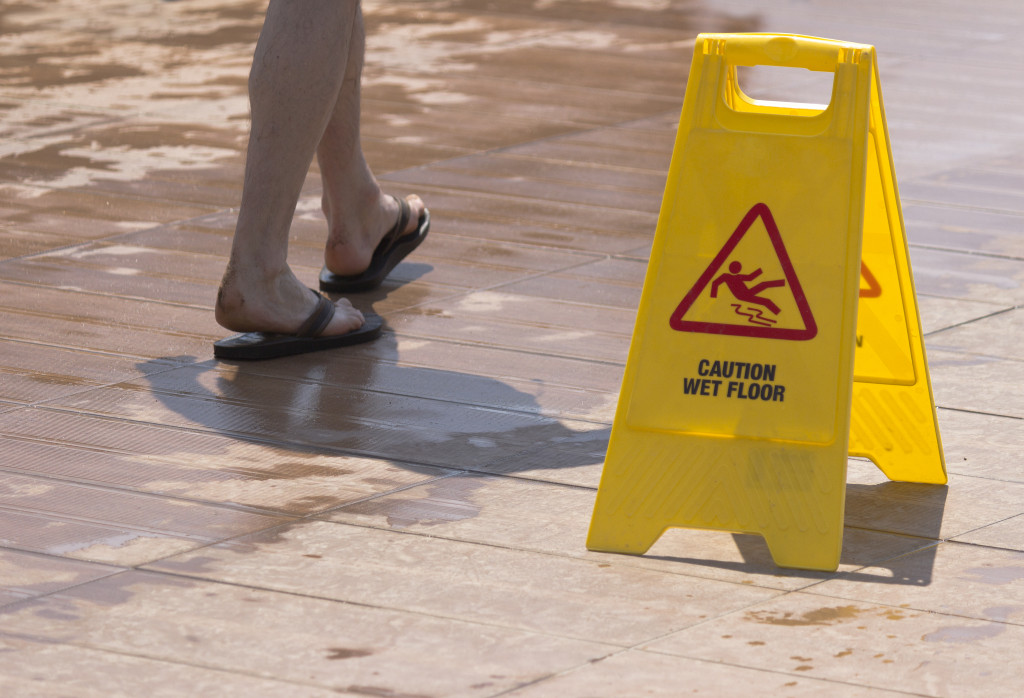Landlords have a legal responsibility to ensure that their tenants are living on a habitable property. While keeping the property in good condition is part of it, it also means that landlords need to be aware of potential health hazards that could endanger their tenants. There are a variety of environmental health hazards that are not easily obvious but can be just as dangerous.
Dangerous Materials
If your rental property is old, then it might have dangerous materials in parts of its construction. Older buildings that landlords inherited or bought might have used lead or asbestos. Lead was extensively used in paint before 1978, and it is present in millions of older homes all over the world. Most of it has been covered up by layers of new paint. If it is in good condition, there is no problem.
But deteriorating lead paint leads to exposure to those in the building. This is the same idea with asbestos. Bringing in hazardous material specialists to inspect the building is important to prevent any problems.
Risks Of Disease
A rental property can also increase the chances of disease in a tenant. It all depends on various factors that the tenants might be exposed to. For example, Legionnaire’s disease is a horrible pneumonia-like disease caused by the Legionella bacteria found in some residential water supplies and hot water systems.
Landlords need to bring in experts who can perform professional legionella risk assessments to identify any risks in the current water supply. Another potential disease risk is mold growth. With damp areas, mold can grow and spread spores into the air. This can cause bad allergic reactions that put your tenants at risk.
Invisible Gases
Another threat that most tenants don’t notice is the presence of invisible gases. The more common one is the threat of carbon monoxide. This is a byproduct of fuel consumption which means gas dryers, ovens, and fireplaces. When tenants inhale too much carbon monoxide, they can feel nausea and fall unconscious.
This leads to brain damage and death. Landlords should ensure that all gas-using appliances are working properly and the chimney is unblocked to properly ventilate the building. Radon is another invisible gas that has serious health consequences.
However, it does cause cancer from long-term exposure. Inspectors can check for these gases and their risks. These assessments can allow a landlord to improve the current building setup.
Proper Temperature Control
Tenants can also have health problems if the home is not properly temperature-controlled. Depending on the time of the year, there can be different results. During the colder months, inadequate heating can increase the chances of tenants catching colds and diseases. The damp is also not a big help to people’s health.
For the summer months, the heat can be bad for the elderly unless there is proper air conditioning in the home. HVAC specialists inspect whether the building has proper insulation, and HVAC systems can ensure that tenants are comfortable and healthy.
Accidental Injuries

Risk assessments should also be done for the potential accidents caused by various structural hazards. The most common accident inside a building is often a slip or a fall. Ensuring that there are preventative measures like railings on the stairs and proper flooring can help prevent them. House inspectors can do an inspection focusing on all these potential accidents waiting to happen so that landlords can fix them.
Fire Hazards
Another common safety hazard for residential rental property is the chance of a fire breaking out. This is mainly connected to the gas and electrical systems. Leaky gas pipes can lead to explosions and fire, while faulty wiring can cause a fire to erupt in the walls.
Both of these can be very bad. Fortunately, you can combine house inspections for fire hazards with accident hazards so that all of them can be potentially identified. This ensures that a building is completely safe for your tenants.
Tenant safety is more than just a legal responsibility. Happy and healthy tenants provide you with a good stream of revenue. They also improve the reputation of your properties. If potential tenants know that you are an attentive and helpful landlord, they would be more interested in renting from you.
Additionally, risk assessments can be very cost-effective. A single risk assessment can check an entire property, which can have several tenants living in it. Reassuring your tenants about their safety is often worth the cost.

